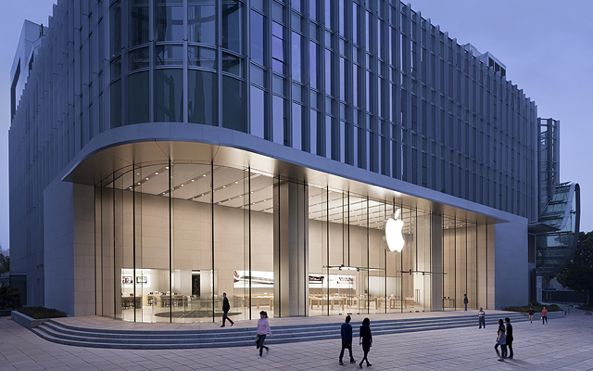In China, each of Apple’s retail stores serves on average 216 million customers. Therein lies the catch to its expansion in the 1.33 billion people market – Apple needs way more stores in this huge country than it can possibly build, and it needs them yesterday.
China is important not just because it has recently displaced the United States as the world’s leading smartphone market, but also because it now contributes to one-fifth of Apple’s total revenue. Also, Apple says China stores have become its highest trafficked and among the highest revenue stores.
Apple CEO Tim Cook recently toured China, talking greater investments with local officials and paying a visit to Foxconn’s new manufacturing plant in Zhengzhou. It was a telling acknowledgment of the importance of China at the highest level, but barely enough to change the fact that the iPhone maker is in serious danger of becoming a victim of its own success in China…
Apple currently operates just five stores in China, two in Beijing and three in Shanghai. To put that in perspective, the company has more retail stores in Pennsylvania (population: 12.7 million) than in all of China. Two additional stores are set to open soon, with plans to open about 25 more stores by the end of calendar 2012 (in fact, in 2012 Apple will build three stores outside the US for each one built in the US).
But building stores in China is not a simple matter of allocating millions of dollars to lease high-trafficked locations, like in Europe, United States and elsewhere. Roadblocks to Apple’s greater retail presence in China include red tape, stubborn local officials, sub-par fair play regulations and complicated dealings with the central Communist regime.
Cook confessed in January that Apple clearly underestimated China’s appetite for Apple’s products, namely the iPhone 4S whose launch drew long lines outside the company’s flagship stores.
[tube]HCKtdbSCadA[/tube]
But these are sweet worries and unlike other problems plaguing the company in China, such as ripped-off products, fake Apple products, scalpers who frequent stores to buy iPhones in bulk and counterfeit stores popping up all over the country.
These fake retail outlets copy Apple Stores down to wood display tables, gray stone and wood floors, wall-mounted graphics, iPads on tilted stands, a circular staircase and even employees wearing blue T-shirts and lanyards around their necks with white plastic name tags.
The Nanjing East Apple Store
And as Apple has just settled a long-standing trademark dispute with Proview over the iPad moniker, the highly anticipated launch of the popular tablet is now bound to attract an insane number of customers to Apple’s stores.
Cupertino is set to open new flagship stores in the cities of Chengdu, Shenzn and Guangzhou, where iPads and iPhones are being made, but this won’t be enough to serve high demand once the iPad hits China.
It’s not just China, Apple has issues meeting the clamour for its products and is facing difficulties serving the growing number of customers in its US stores as well. The issue first exhibited itself shortly after the iPhone, which just turned five, had arrived in the summer of 2007. Tons of customers flocked into stores to get their hands on the new device and have been doing so ever since, especially when Apple added the iPad to its iOS device mix.
In response to The New York Times’ controversial investigative coverage of Apple’s retail and supply chain practices, Cupertino tweaked the Genius Bar to increase capacity, is reportedly considering a career path for new retail hires, called the Pathways program, and has parted with a fraction of its $110+ billio cash pile to give workers that assemble its products a much-needed pay raise.
It remains to be seen whether Apple can build new stores in China fast enough to bank on the popularity of its iOS gadgets.
Reuters opines that Apple’s retail expansion in China “has fallen well short of its own goals”, warning the company risks endangering the sustainability of its success in the 1.33 billion people market should impatient customers could turn to gray market to get their Apple gear or consider competing offerings.
If anything, Apple’s stores in China did put US outlets to shame, including flagship ones such as as the Fifth Avenue store, don’t you think?

